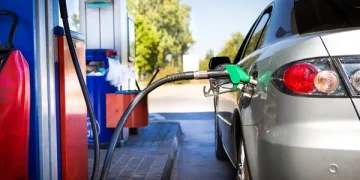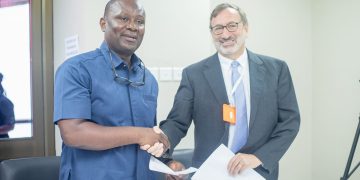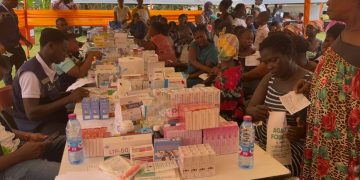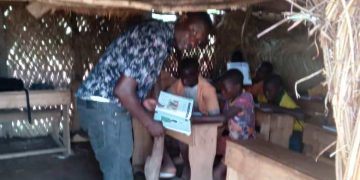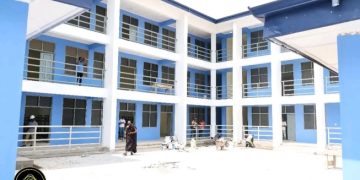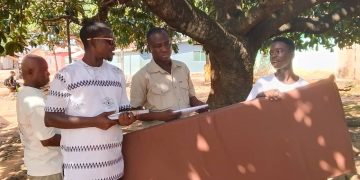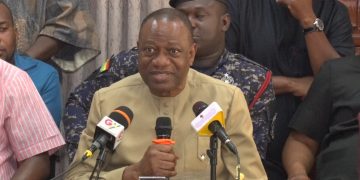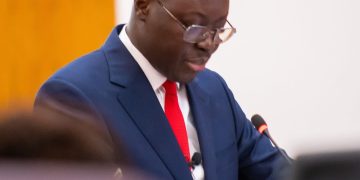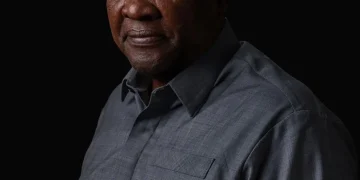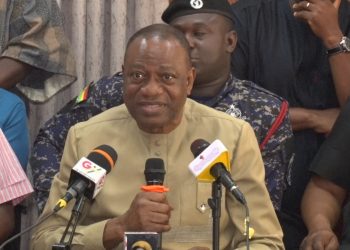Only 15% of Sierra Leone’s fertile land is farmed. Henry Musa Kpaka, the agriculture minister, says the president is racing to boost yields and feed 8.4 million people after decades of civil war.
Nourished by seven major rivers and abundant inland valley swampland, Sierra Leone has ideal conditions to produce enough rice, a staple food, yet it continues to import substantial amounts.
“In his second term, President [Julius Maada] Bio really wanted to be very deliberate and determined,” Henry Musa Kpaka, the country’s agriculture and food security minister, tells The Africa Report from his office in Freetown.
Bio backs Feed Salone, a national programme focused on enhancing agricultural productivity to ensure food security. Launched in 2023, the initiative has increased yields by investing in farmers through seeds and essential inputs. “It’s crucial we rely less on imports for our main staple – rice. Achieving food sovereignty is a clear goal set by the president,” says Kpaka.
Growing local and reducing imports
Introducing modern technology to smallholder farmers has improved productivity. Kpaka, an economist by training, emphasises boosting staple crop production, particularly rice, to strengthen Sierra Leone’s economy.
“It’s understandable to import items we don’t produce, but we must urgently reduce imports of items we can grow ourselves. Importing weakens our currency and purchasing power,” he says. The country’s GDP nosedived during the Covid-19 pandemic, while inflation skyrocketed.
Imports of other key foods such as eggs, onions and chicken have also declined, reflecting the programme’s broader economic benefits. “Feed Salone boosts the economy by preventing foreign reserves from being spent on imported food,” says Kpaka.
Changing attitudes to farming is also vital. Since the civil war ended in 2002, Sierra Leone has struggled to regain pre-war agricultural yields. The conflict destroyed perceptions of farming as a profitable business.
Post-war recovery created dependence, with people accustomed to receiving aid
“Before the war, people with oil palm, cocoa or kola nut plantations proudly sent their children to university with earnings from agriculture. Post-war recovery created dependence, with people accustomed to receiving aid.”
Boosting crop production
Creating food processing infrastructure, especially for rice, is central to the plan. Many smallholder farmers either consume their rice or store it as seed, limiting its visibility in markets.
“People often ask where our rice is. Sierra Leone’s annual demand is about 1.2 million metric tonnes, and we import about 350,000 tonnes,” says Kpaka. “Around 65% of our rice consumption is locally produced.”
Feed Salone’s investment in farming inputs has increased local rice availability, driving prices down. According to the UN’s latest World Food Programme (WFP) quarterly report, rice prices have declined nationwide. Kpaka plans to expand rice processing, packaging and marketing in major towns like Freetown, Kenema, Koidu and Makeni, increasing awareness of local produce.
The initiative is also enhancing school feeding programmes. While the WFP historically imported 90% of the food served to schoolchildren, Kpaka notes that 40% now comes from local sources, aiming for 50% by 2026 and full local sourcing by 2030.
Cassava production is another growth area. Sierra Leone has achieved higher yields by using improved varieties. Traditionally processed into garri (flour) or fufu (dough), cassava production is set to expand with $40m support from the Islamic Development Bank, enabling the manufacture of cassava flour, starch and chips locally.
“It’s essential we process cassava visibly for consumers to recognise it as Sierra Leonean produce,” says Kpaka. “We want locals fully involved in these agricultural value chains.”
Key agricultural initiatives
While cassava predominantly serves domestic markets, certified organic cocoa remains an export commodity. Sierra Leone exported nearly 20 million metric tonnes of cocoa over the past two years. Kpaka highlights recent expansion efforts, planting 3,000 hectares of new cocoa varieties last year and aiming for another 2,000 hectares this year.
The agriculture ministry has partnered with the European Union on a €35m ($40.28m) project supporting sustainable food and agricultural development. The EU is directly funding production activities, notably focusing on tackling infant malnutrition.
Oil palm cultivation is another key initiative. Sierra Leone, a net exporter of vegetable oil, has two companies converting raw oil palm into processed oil, ending the need to import. “Oil palm is a high-value cash crop for us,” he says.
Kpaka’s office will soon release updated agricultural growth figures, expecting results exceeding previous years. “It’s not just about crop production; it’s about transforming lives economically through agriculture, the backbone of Sierra Leone’s economy,” Kpaka tells The Africa Report.
Feed Salone’s goals
• Boost agricultural productivity: Significantly increase the output of key crops and livestock to fuel inclusive economic growth and raise the sector’s contribution to GDP.
• Achieve food self-sufficiency: Reduce dependence on food imports, particularly of staple crops like rice, onions and poultry, and ensure that the country can feed itself sustainably.
• Create jobs and empower communities: Generate employment opportunities, especially for women and youth, by modernising agriculture and supporting agribusinesses.
• Reduce hunger and malnutrition: Alleviate food insecurity and improve nutrition by increasing the availability and accessibility of nutritious, locally produced food.
• Increase export earnings: Develop value chains for export-oriented crops such as cashew and cocoa to bring in foreign exchange and boost farmers’ incomes.
• Build resilient food systems: Strengthen climate resilience and sustainability in agriculture through climate-smart practices, mechanisation and improved infrastructure.
• Promote private sector participation: Encourage private investment and facilitate access to finance for agribusinesses and smallholder farmers.
Source: Africa Report




